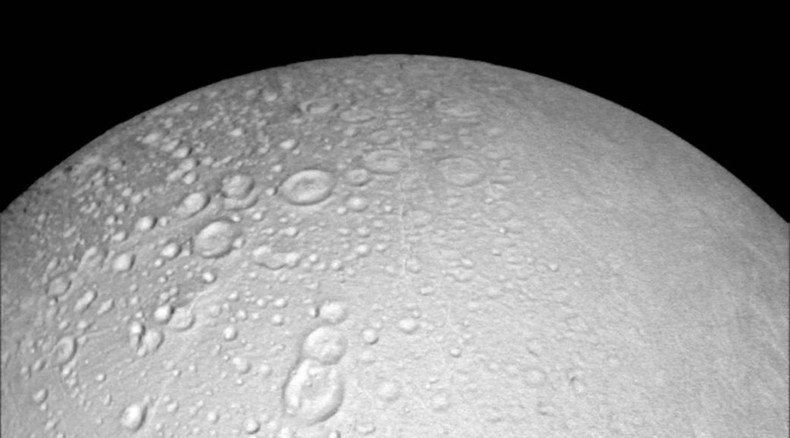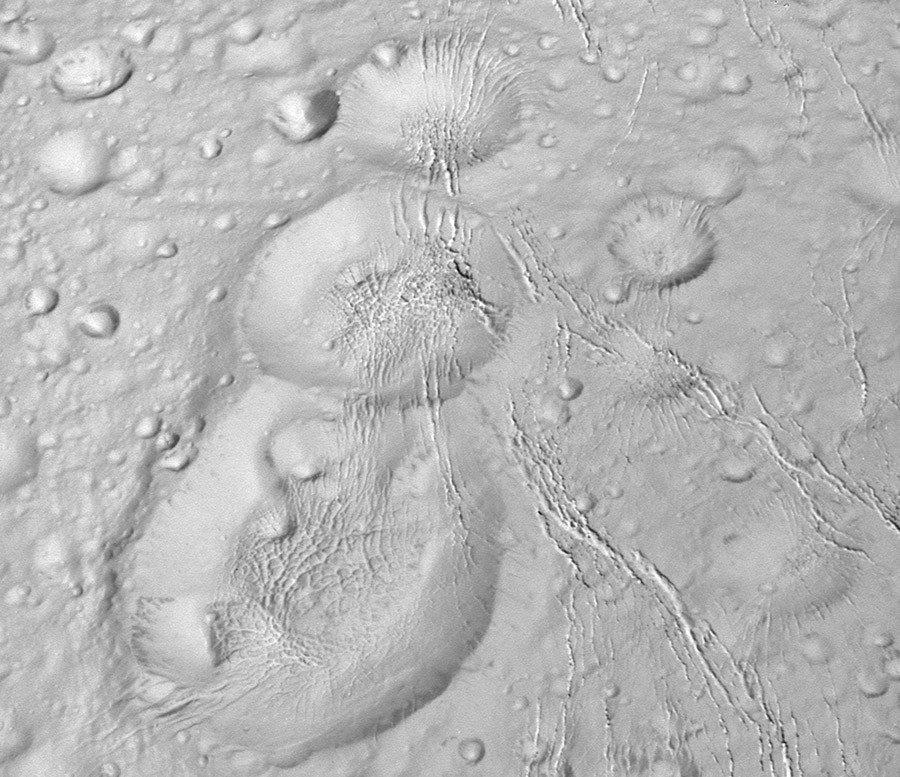‘Saturnian Snowman’: NASA releases ‘best-ever’ northern views of planet’s enigmatic moon

Newly released images of the northern pole of Saturn's icy Enceladus moon have been captured by NASA's Cassini spacecraft. Scientists expected these areas to be heavily cratered, but were surprised with what they saw on the ocean-bearing satellite.
New closest northern views of Saturn's icy, ocean-bearing moon Enceladus! @CassiniSaturn pics: http://t.co/zdLHC1mkWrpic.twitter.com/3Xkk3F4Qe0
— NASA (@NASA) October 16, 2015The northern views of the moon were obtained this week during the Cassini flyby. The spacecraft approached Enceladus as near as 1,142 miles (1,839 kilometers) above its surface, returning its “best-ever views” of Saturn's natural satellite, NASA said. Although the spacecraft has been on its exploration mission for over a decade, obtaining a closer look at this part of Enceladus was not previously possible, as its north pole had been shrouded in darkness.
Some raw images from the Enceladus flyby on Oct. 14. Processed images coming soon. Details: http://t.co/yxYagio1QPpic.twitter.com/LRmm3MeAKO
— CassiniSaturn (@CassiniSaturn) October 15, 2015The new images were taken at a distance of 4,000 to 6,000 miles (6,000 to 10,000 kilometers), with the most detailed scale being around 115 feet (35 meters) per pixel. The moon itself is around 315 miles (505 kilometers) wide.
Based on low-resolution images from previous missions, scientists expected the northern polar region of the moon to be heavily cratered. There are a number of craters that overlap one another, “each one recording an impact in the moon's distant past,” according to NASA. The scientists even saw what they called a “Saturnian Snowman” on the moon.

But the new Cassini images also suggest Enceladus has “a landscape of stark contrasts.” Cracks wrapping around the snow-white moon were also discovered on its northern pole.
New high-resolution images of Saturn's moon Enceladus show a landscape of stark contrasts. http://t.co/19fl476XNcpic.twitter.com/I9CHRjmIlc
— CassiniSaturn (@CassiniSaturn) October 15, 2015“The northern regions are crisscrossed by a spidery network of gossamer-thin cracks that slice through the craters,” Paul Helfenstein, a member of the Cassini imaging team at Cornell University, said. “These thin cracks are ubiquitous on Enceladus, and now we see that they extend across the northern terrains as well.”
Saturn moon has subsurface ocean that covers entire body – NASA http://t.co/ZquJUJPrSFpic.twitter.com/0T99354n9J
— RT (@RT_com) September 16, 2015Earlier this year, data from the Cassini mission revealed that Enceladus's outer ice shell was not frozen solid to its interior, proving that a global ocean is present on the celestial body. The subsurface ocean is similar in makeup to some of the life-bearing salt lakes on Earth, a US study suggested, making some astrobiologists believe the small moon is the best place to search for alien life in our solar system.
READ MORE: Cradle of alien life? Ocean on Saturn moon resembles habitable lakes on Earth
Researchers hope to learn more about Saturn's enigmatic natural satellite, when Cassini is expected to have more close encounters with it. On October 28, the spacecraft will reach within 30 miles (49 kilometers) of the moon’s southern polar region. The deepest-ever dive through the moon's plume of icy spray is planned during the mission, to sample the chemistry of its ocean. During next flyby in December, researchers plan to measure the amount of heat coming from the moon's interior. These findings might relate to the potential habitability of Enceladus, NASA said.












